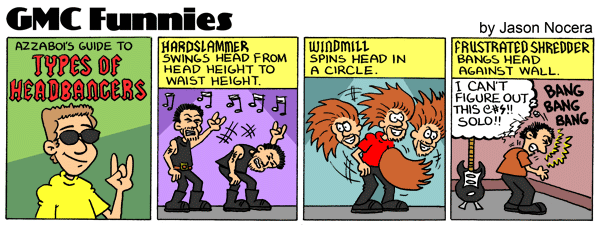Changing Pickups, Soldering question |
|
|
|
|
|
| Jun 23 2011, 06:45 PM |
|
Usually there shouldn't be any caps involved with such a simple setup. What kind of humbucker you are putting on??
-------------------- - Ivan's Video Chat Lesson Notes HERE
- Check out my GMC Profile and Lessons - (Please subscribe to my) YouTube Official Channel - Let's be connected through ! Facebook! :) |
|
|
||
|
|
|
|
| Jun 23 2011, 07:21 PM |
|
Just take it easy, and practice a bit on some scrap wires. Some practice will help you get the hang of it.
Here's a nice video tutorial: EDIT: PS I've changed my bridge humbucker on my strat, and it was even complicated task, although I never done it before. However, I did get some soldering practice. It's very easy to make a bad connection, so I strongly advise rehearsing on at least 10-15 wires before going for the real thing. -------------------- - Ivan's Video Chat Lesson Notes HERE
- Check out my GMC Profile and Lessons - (Please subscribe to my) YouTube Official Channel - Let's be connected through ! Facebook! :) |
|
|
||
|
|
|
|
| Jun 23 2011, 07:35 PM |
|
No caps I think, unless you want a resister across the pot connections wiring for tone smoothing?
When I got my pickups replaced, I got them professionally installed. He said the tone (darkness or brightness) of your pickups comes down to the types of pots being used and some also apply a resister across them. I think it was 250k vs 500k pots made the guitar sound darker or brighter? You should look at 'Stellartone Tonestyler Tone' pot for the best option of both worlds. This post has been edited by Azzaboi: Jun 23 2011, 07:36 PM --------------------  Play Games Arcade Take a break, Play Games! Play the best free online flash games at Aaron's Game Zone like Bloons Tower Defense 4! |
|
|
||
|
|
|
|
| Jun 23 2011, 08:53 PM |
|
no need for a capacitor then.
-------------------- My bands homepage
All time favourites: B. Streisand - Woman in Love, M. Hopkin - Those were the days, L. Richie - Hello |
|
|
||
|
|
|
|
| Jun 26 2011, 08:13 PM |
|
Yeah SJ, that's a good point to have two irons. I have one at 15W and one at 30 watts for grounding wires to the pot. In the end I often do everything with the 30 watt iron with some burnt wire insultaion as a result.
But yes, two different gives a better overall result. Got to be careful with 30 watt iron since a pot can overhear. -------------------- My bands homepage
All time favourites: B. Streisand - Woman in Love, M. Hopkin - Those were the days, L. Richie - Hello |
|
|
||
|
|
|
|
| Jun 26 2011, 08:30 PM |
|
Ah yes, failed the remember that. It's definitely important to use stronger soldering iron for pots, as they act as a heatsink. It's hard to get those connections unsoldered/soldered to it.
-------------------- - Ivan's Video Chat Lesson Notes HERE
- Check out my GMC Profile and Lessons - (Please subscribe to my) YouTube Official Channel - Let's be connected through ! Facebook! :) |
|
|
||
1 User(s) are reading this topic (1 Guests and 0 Anonymous Users)
0 Members:





























